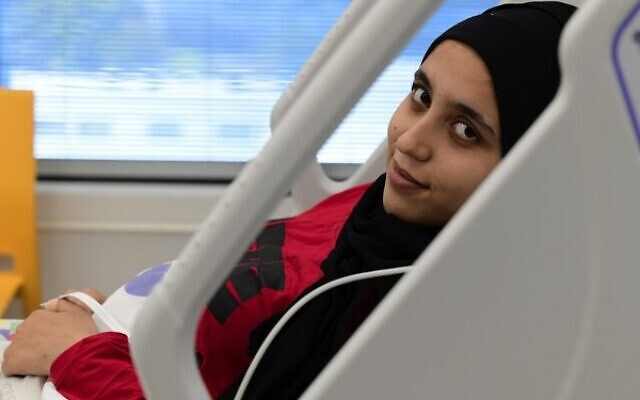In Israeli first, Gazan girl receives new kind of pacemaker
Teams of doctors from Save A Child’s Heart at Wolfson Medical Centre implant cardiac device through 18-year-old patient’s neck
TIMES OF ISRAEL – For the first time in Israel, a new kind of pacemaker has been implanted in a teenager using innovative methods — by catheterisation through the patient’s neck rather than the groin.
The recipient, 18-year-old Gaza resident Shahad, was treated at Wolfson Medical Center in Holon through Save A Child’s Heart.
The new pacemaker is placed directly into the heart, is smaller than a conventional pacemaker and involves no surgical incision or scarring.
“We’ve been treating Shahad since she was a young child. She has a complex [anatomical] heart malformation,” explained Dr Sagi Assa, Senior Paediatric Cardiologist at Save a Child’s Heart and Head of the Paediatric Interventional Cardiology Unit at Wolfson.
“Usually this kind of situation goes along with a heart block, or a problem with the heart’s natural pacemaker, that develops by the age of one,” Assa added.
“We replaced her pacemaker several times over the years, but her body kept rejecting them. She also developed inflamed scar tissue at the site of the implantation in her chest. No matter how we treated her with local and systemic antibiotics and other treatments, the problem kept recurring.”
The advent of the new kind of pacemaker provided the team with an opportunity to help control Shahad’s heart arrhythmia and avoid the complications she has repeatedly experienced.
However, the doctors faced the obstacle posed by the fact that Shahad was born with a condition called interrupted inferior vena cava, meaning that she is without a major vein connecting her lower body to her heart. Without this, the medical team would have to find a different method to implant the device.
“We would obviously prefer to go through the groin, especially in children, but in Shahad’s case we had to go through the neck, which is risky,” Assa said.
“We had to bring both the paediatric cardiology and electrophysiology team together to do this. The procedure itself is short, but it has to be planned carefully,” he said.
The procedure involved only making a small puncture into the vein in the neck, and no use of a scalpel.
“The recovery and everything is much better, especially for this child. This meant nothing external to the heart and no material below the skin, which had led to complications for her in the past,” Assa said.
After recuperating, Shahad returned home to Gaza.
Her mother said, “I was very scared for Shahad, and I thank Save a Child’s Heart and the medical team for the help and life-saving care they provided to my daughter.”
Despite her medical condition and several long hospitalisations that interrupted her high school years, Shahad successfully passed all her final exams and graduated. She has begun studying technology and graphic design at a university in Gaza.
Founded at Wolfson in 1995, Save a Child’s Heart has saved the lives of almost 7000 children from 70 countries and has brought more than 150 healthcare professionals to Israel for training.


comments